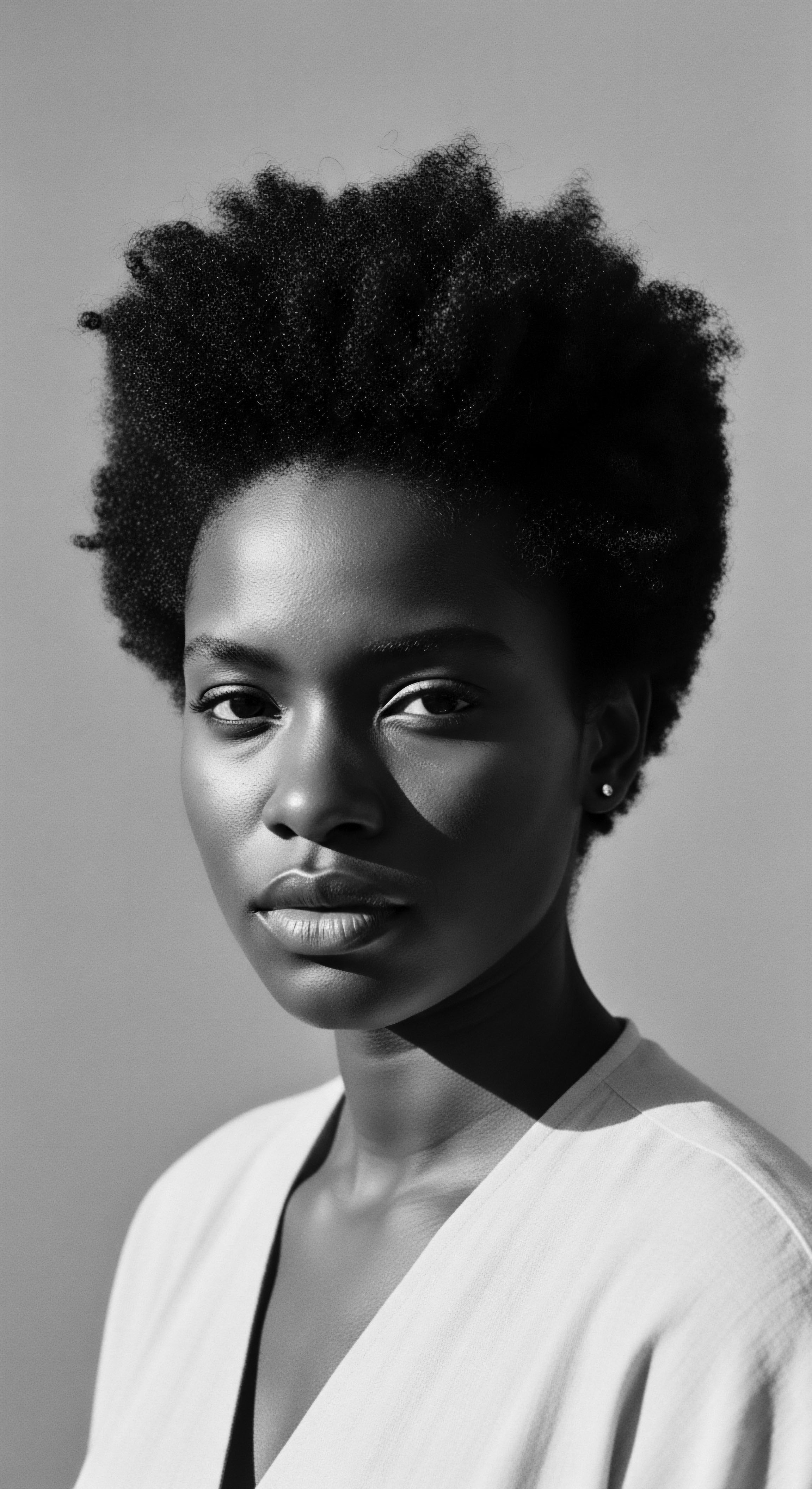
Fundamentals
The concept of Afro Hair Rituals finds its roots deep within the soil of ancestral knowledge and community wisdom, offering more than superficial adornment for textured hair. This expression defines a continuum of practices, inherited across generations, that acknowledge the unique structural and cultural qualities of Afro-textured, Black, and mixed-race hair. It speaks to the deliberate acts of care, styling, and adornment that have served not just aesthetic purposes, but also as vital channels for identity, communication, and spiritual connection through millennia. These rituals are fundamental to understanding the profound bond between individuals and their heritage, a connection often expressed through the very strands that spring from their scalp.
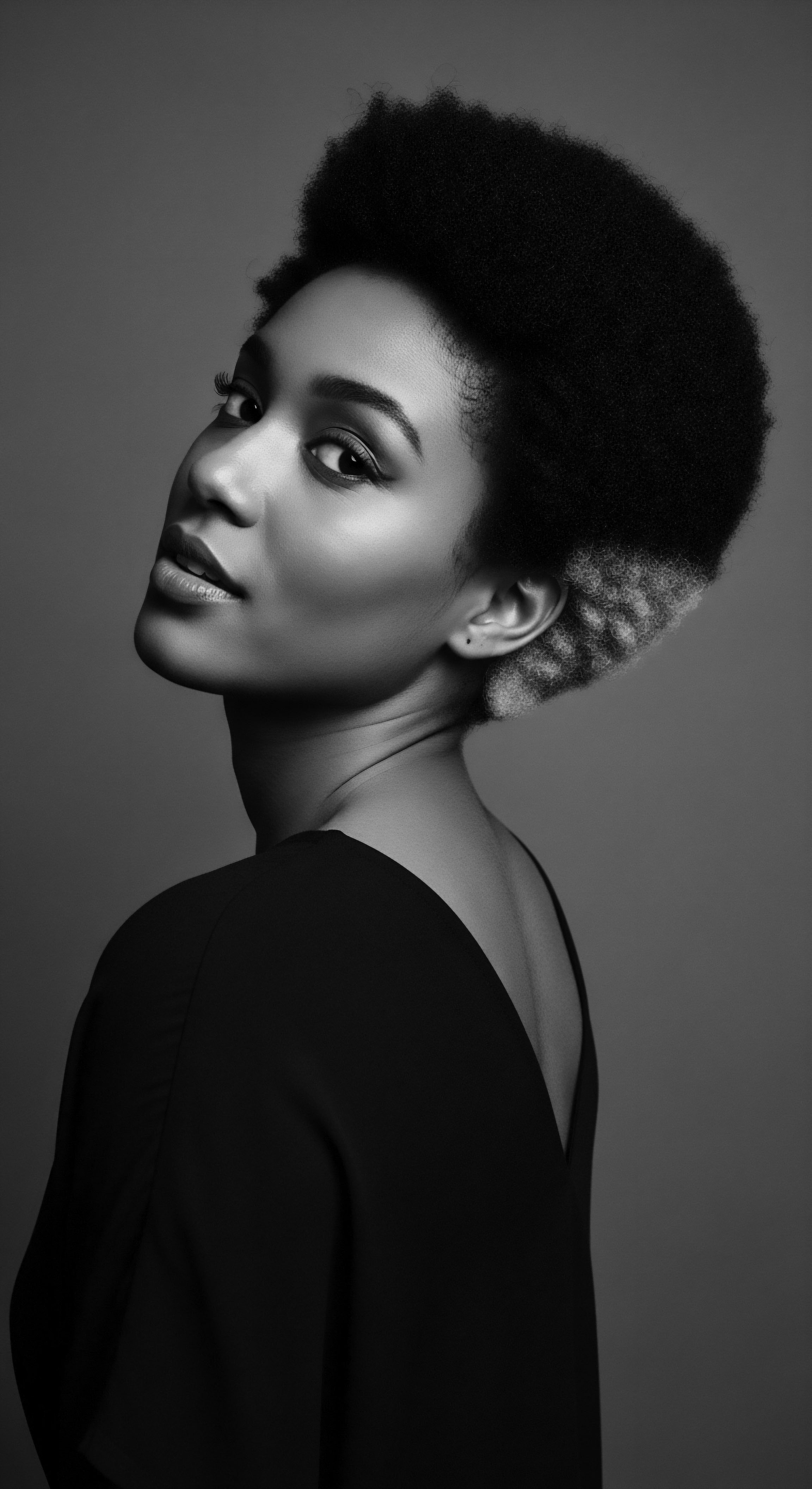
The Sacred Canopy of Hair
Across various indigenous African societies, hair was regarded as a sacred part of the body, believed to be the closest point to the divine, a conduit for spiritual energy and ancestral wisdom. This spiritual significance permeated every aspect of hair care, transforming daily routines into meaningful rituals. From the careful cleansing with natural clays and herbs to the deliberate application of rich oils and butters, each step honored the hair as a living extension of self and spirit.
Styling practices, such as intricate braiding or loc formations, conveyed complex social messages, signifying age, marital status, tribal affiliation, wealth, and even personal achievements. The preparation of hair often unfolded in communal gatherings, strengthening social bonds through shared stories, laughter, and the gentle touch of intergenerational hands.
The understanding of Afro Hair Rituals commences with a recognition of this ancient reverence. It is not merely about managing curls and coils, but about preserving a sacred legacy. The very act of caring for textured hair, from the selection of ingredients to the patient execution of styling, reconnects one with a lineage of wisdom that predates colonial narratives. This deep-seated appreciation for hair’s inherent beauty and profound meaning offers a guiding light for anyone beginning to explore the world of Afro-textured hair.
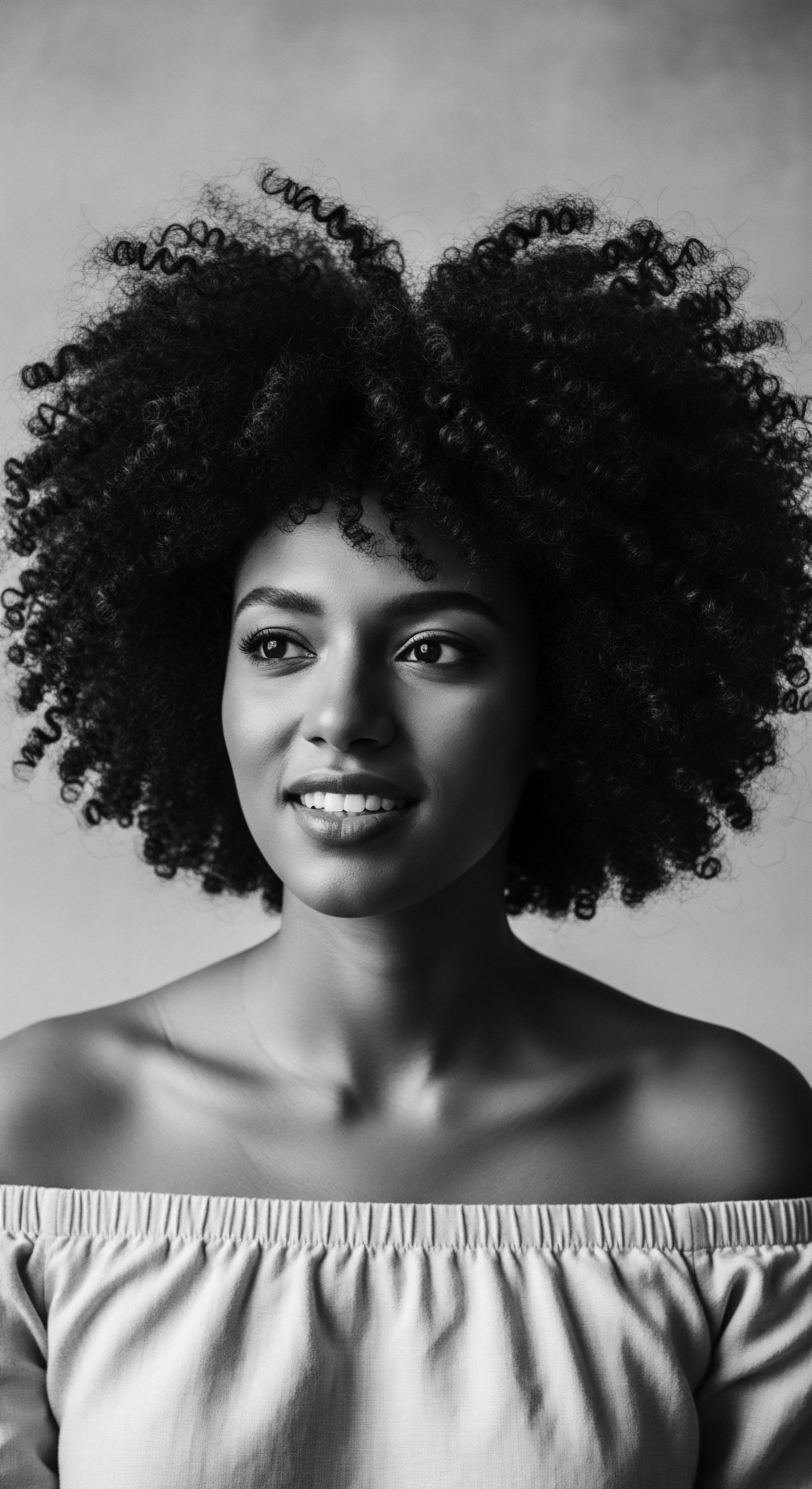
Elemental Biology and Ancient Practices
The unique helical structure of Afro-textured hair, with its tight coils and ellipses, calls for particular care. Unlike straighter hair types, coiled strands are more prone to dryness and breakage due to their structure, which makes it harder for natural oils from the scalp to travel down the hair shaft. Ancestral practices, honed through centuries of observation and experience, addressed these biological realities with remarkable ingenuity. Traditional solutions often involved plant-based emollients, humectants, and protective styling.
- Shea Butter ❉ A foundational element in West African hair care, derived from the nuts of the shea tree, provided intense moisture and a protective barrier against harsh environmental elements.
- African Black Soap ❉ Crafted from plantain skins, cocoa pods, and palm oil, this gentle cleanser purified the scalp and strands without stripping essential moisture.
- Chebe Powder ❉ Hailing from Chad, this blend of herbs, bark, and seeds has been used by the Basara women for centuries to promote length retention and reduce breakage.
- Marula Oil ❉ A traditional oil from Southern Africa, valued for its ability to moisturize and protect hair.
These traditional ingredients and methods represent a scientific understanding rooted in practical application, passed down orally and through demonstration. They form the bedrock of what we now comprehend as mindful and effective care for textured hair.
Afro Hair Rituals represent a timeless continuum of culturally significant hair care practices, deeply rooted in ancestral wisdom and the unique biological needs of textured hair.
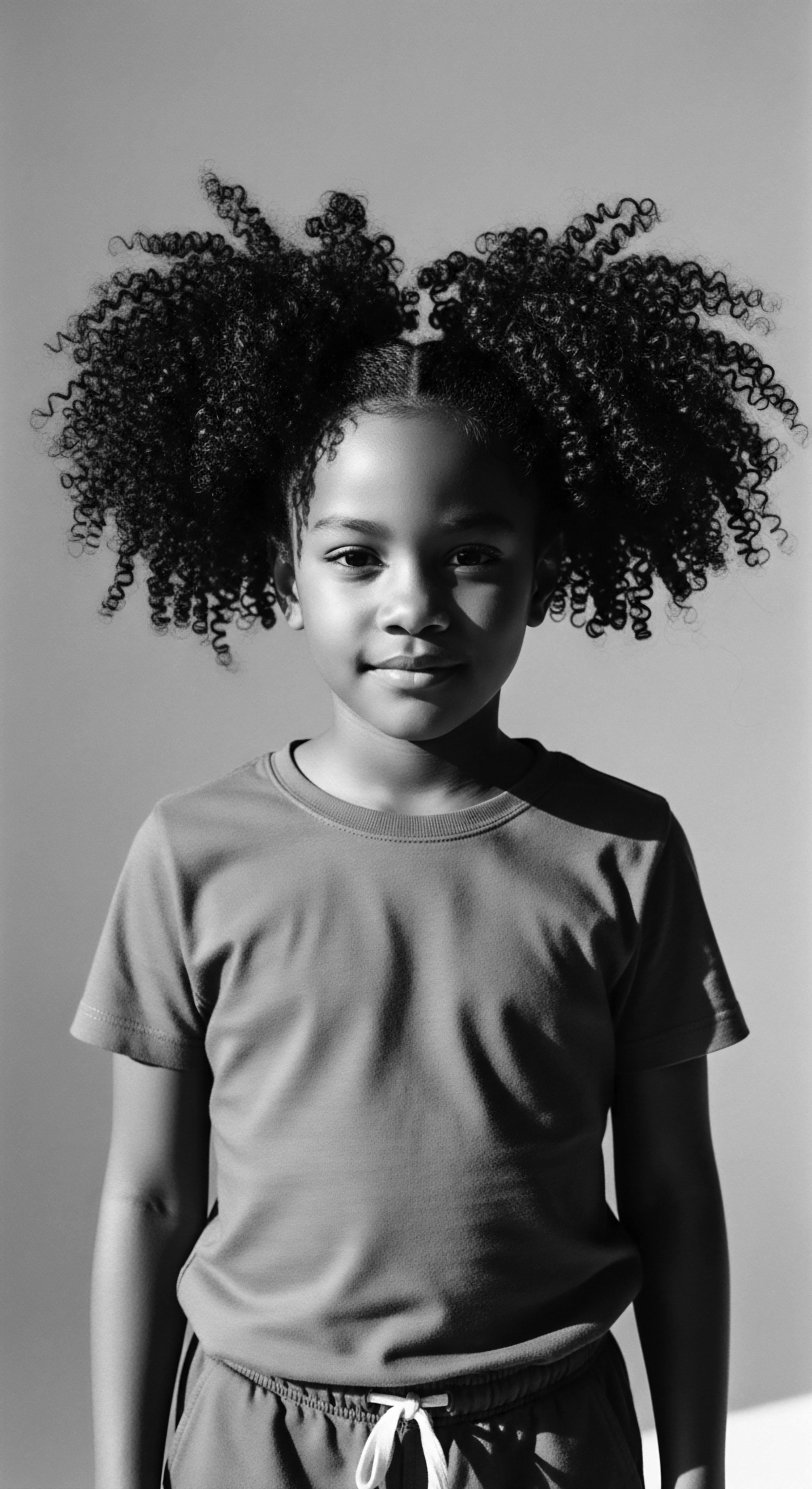
Early Expressions of Identity and Status
In pre-colonial African societies, a person’s hairstyle could communicate a vast array of details about their life story and standing. Hairstyles were living biographies. A single glance could convey whether one was married, of a particular social class, or in mourning. These coiffures were not static but evolved with life’s passages, reflecting changes in age, marital status, and even spiritual beliefs.
The time and artistry invested in creating these styles also spoke volumes, signifying dedication and communal bonds. The collective process of hair styling often took hours, sometimes days, serving as a powerful social ritual for storytelling and the transmission of cultural values.
This initial exploration of Afro Hair Rituals as a fundamental concept reveals its dual nature ❉ a practical system of care born from elemental biology, and a profound cultural expression interwoven with identity and spirituality. It lays the groundwork for appreciating the intricate relationship between hair, heritage, and the human experience within Black and mixed-race communities.
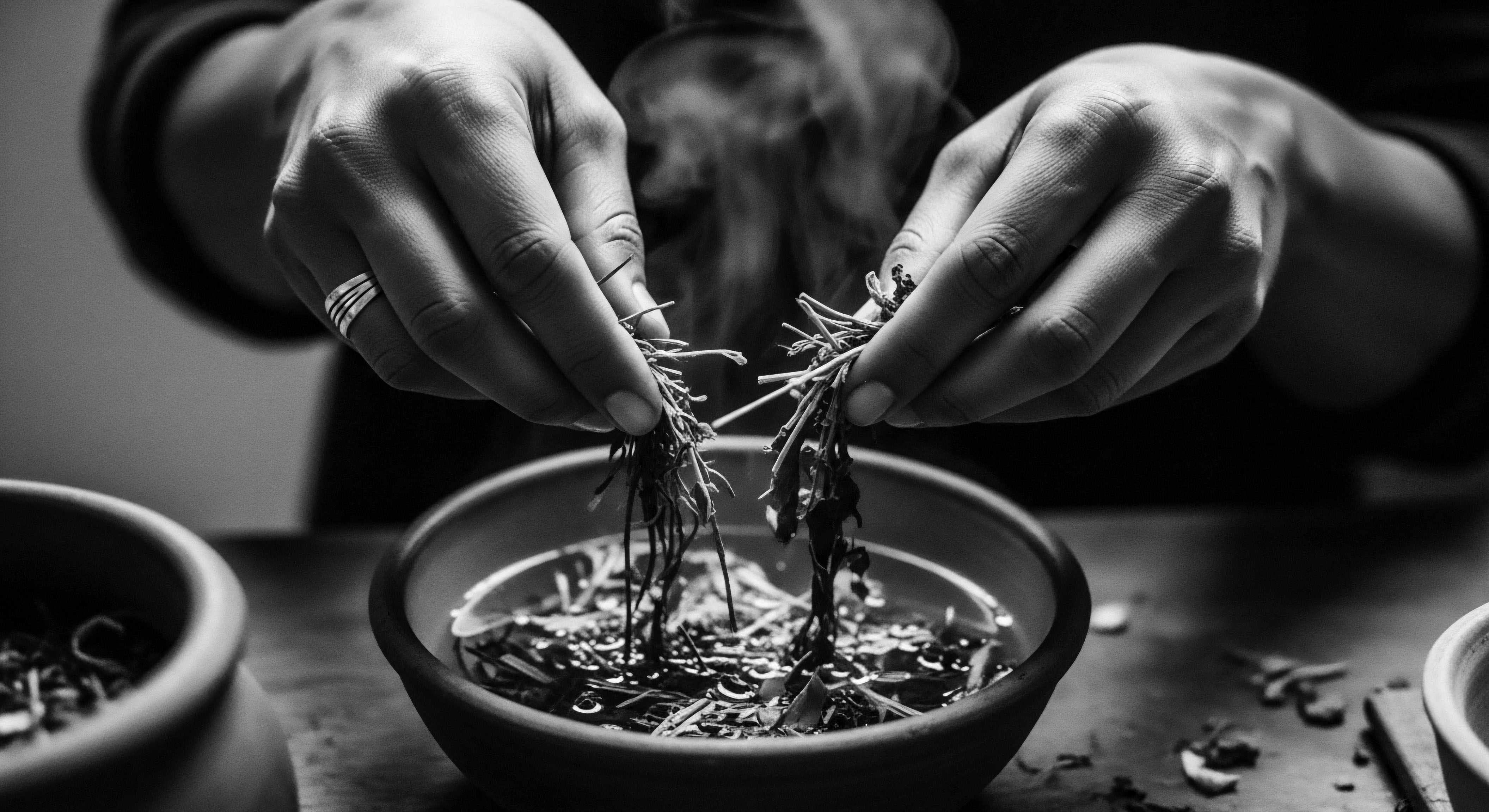
Intermediate
Moving beyond foundational principles, an intermediate understanding of Afro Hair Rituals delves into the profound historical trajectories and nuanced cultural meanings that have shaped these practices across the African diaspora. This deeper exploration recognizes that these rituals are not relics of a distant past; they are living traditions, continuously adapted and reinterpreted as expressions of resilience, identity, and profound connection to heritage. The hair itself serves as a tangible link to ancestral narratives and communal memory, reflecting centuries of adaptation and spirited innovation.

The Echoes of Displacement and Resilience
The transatlantic slave trade marked a cataclysmic rupture in the continuity of African life, yet within this devastation, the enduring significance of hair practices persisted as a powerful act of defiance. Enslaved Africans, forcibly stripped of their languages, names, and cultural symbols, found ways to preserve fragments of their heritage through their hair. The systematic shaving of heads upon arrival in the Americas, intended to dehumanize and erase identity, inadvertently highlighted the centrality of hair to selfhood. In the face of unimaginable hardship, enslaved individuals ingeniously adapted their hair care using meager resources available, such as animal fats and plant oils, to maintain the health of their hair and uphold cultural customs.
This period saw hair transform into a secret language, a medium of covert communication and resistance. Braids, in particular, became conduits for hidden messages. The specific patterns could symbolize escape routes or conceal precious seeds to be planted upon reaching freedom.
Such acts transformed a personal care routine into an assertion of agency and a collective effort towards liberation. The resilience displayed through these practices underscores the inherent strength embedded within Afro Hair Rituals—a strength forged in the crucible of adversity.
Afro Hair Rituals are not merely personal care; they are living narratives of resistance and cultural preservation, echoing the resilience of generations across the diaspora.
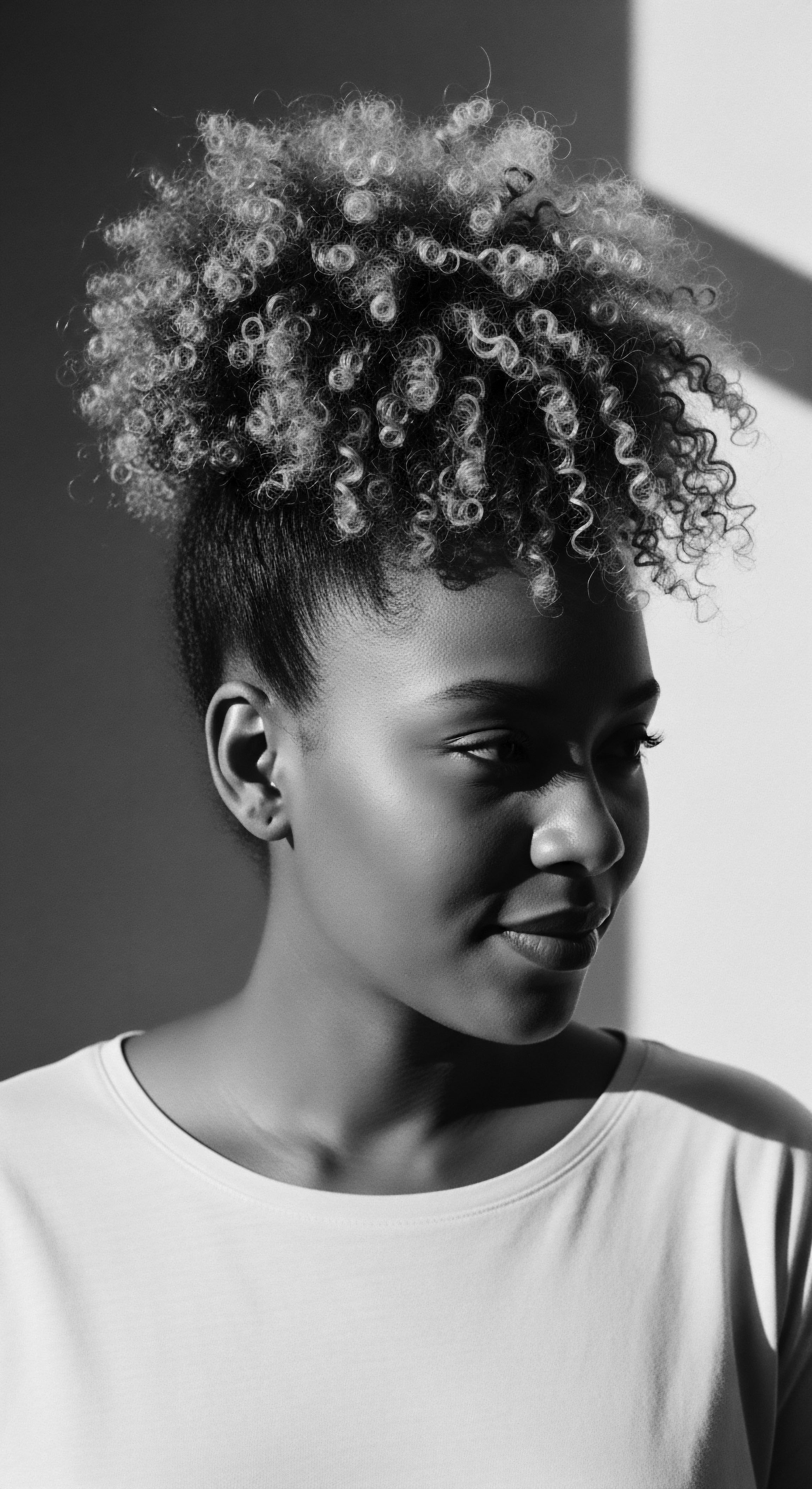
The Tides of Assimilation and Awakening
Post-emancipation, and particularly in the early to mid-20th century, prevailing Eurocentric beauty standards heavily influenced perceptions of Black hair. The quest for social acceptance and economic mobility often led to the widespread adoption of chemical straighteners and hot combs, tools that allowed textured hair to conform to mainstream ideals of “good hair”. This era reflected societal pressures that often equated professional success with hair that mimicked European textures, fostering a complex relationship with natural hair within Black communities.
A significant shift began with the Civil Rights and Black Power movements of the 1960s and 1970s. The Afro hairstyle emerged as a potent symbol of Black pride, self-acceptance, and a powerful rejection of oppressive beauty norms. Wearing one’s hair in its natural, unadulterated state became a political statement, a declaration of identity, and a visible connection to African ancestry.
This period saw a renewed appreciation for textured hair, sparking a re-evaluation of its inherent beauty and cultural meaning. It signaled a profound collective awakening, paving the way for the contemporary natural hair movement.
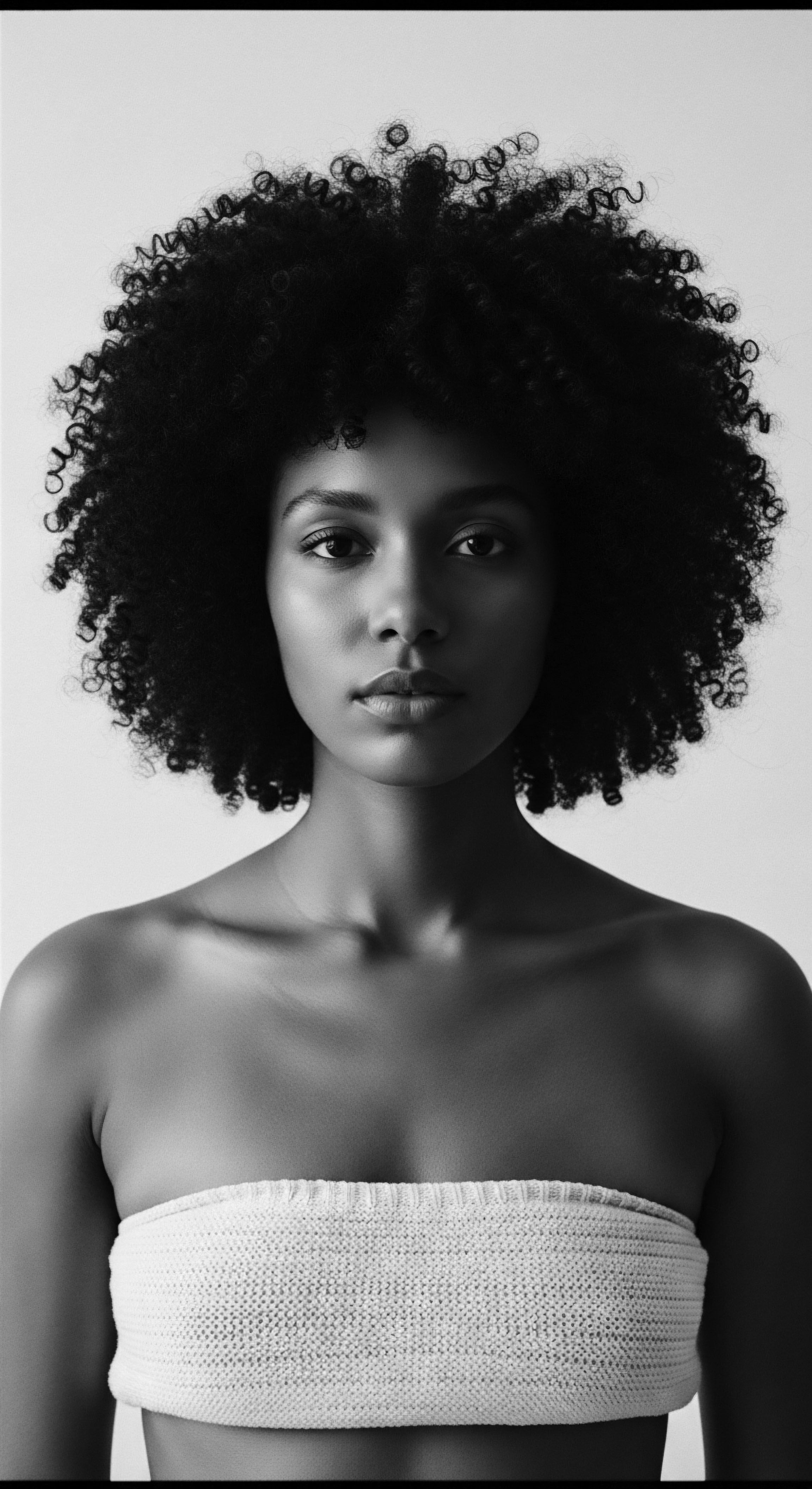
A Spectrum of Care and Style
The evolution of Afro Hair Rituals reflects a dynamic interplay between historical pressures and ongoing cultural expression. Today, the spectrum of care for textured hair spans a range of traditional techniques validated by modern understanding, alongside innovative products and styles.
| Category of Practice Moisturizing & Sealing |
| Ancestral Context Utilized natural butters (e.g. shea, cocoa) and plant-derived oils (e.g. coconut, palm kernel) to hydrate and protect hair from environmental stressors. |
| Contemporary Relevance / Modern Link Modern formulations often combine these traditional oils with humectants and ceramides, recognizing the importance of moisture retention for coil integrity and flexibility. |
| Category of Practice Protective Styling |
| Ancestral Context Braids, twists, and locs safeguarded hair from daily manipulation and environmental damage, also serving as social indicators and communication tools. |
| Contemporary Relevance / Modern Link These styles continue to be staples for reducing breakage, promoting length retention, and expressing cultural identity, often with added extensions or modern techniques. |
| Category of Practice Cleansing & Detoxification |
| Ancestral Context Employed natural clays (e.g. rhassoul clay) and African Black Soap for gentle, purifying washes that did not strip hair of its natural oils. |
| Contemporary Relevance / Modern Link Contemporary sulfate-free shampoos and detoxifying scalp treatments align with this ancestral wisdom, emphasizing balanced cleansing for scalp health. |
| Category of Practice These practices, passed through generations, highlight the enduring wisdom of Afro Hair Rituals in fostering both hair health and cultural pride. |
Understanding Afro Hair Rituals at this intermediate level encourages a deeper appreciation for their adaptive nature and their sustained role in cultural identity formation. It fosters a connection to the past, recognizing how history, resilience, and personal expression intertwine within each strand of textured hair.

Academic
The academic understanding of Afro Hair Rituals transcends superficial observation, anchoring itself in rigorous interdisciplinary inquiry. This involves a meticulous examination of their ethnobotanical, sociological, psychological, and historical dimensions, revealing their profound meaning as complex systems of care, identity construction, and cultural preservation within communities of African descent. An exploration of Afro Hair Rituals demands an analytical lens that appreciates both the material science of coiled hair and the intricate semiotics embedded within styling practices, viewing them as living archives of ancestral knowledge and lived experience. The term signifies a holistic framework encompassing intentional practices, traditional ingredients, and communal acts that have profoundly shaped Black and mixed-race hair experiences across time and geographical dispersion.
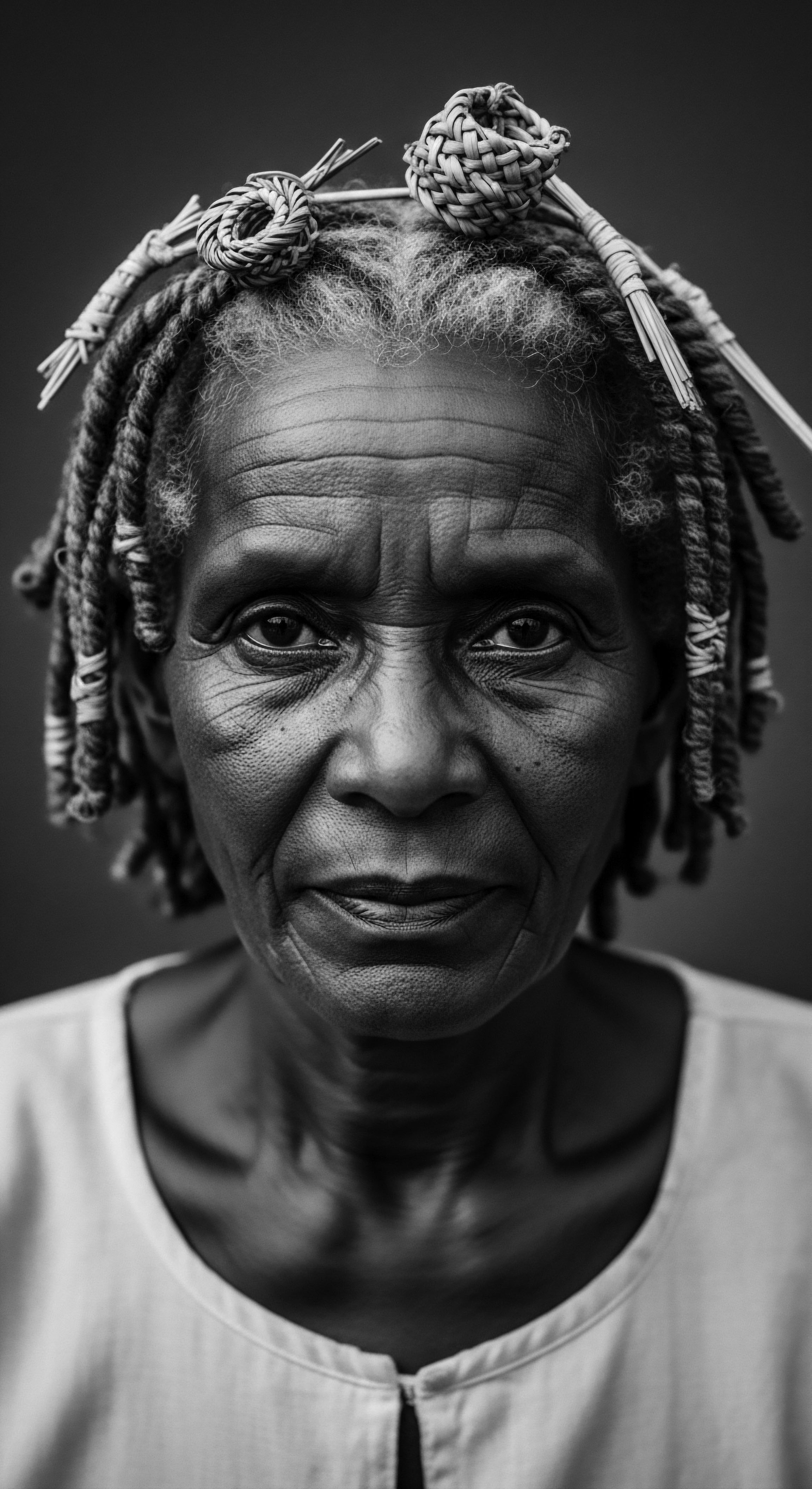
The Intrinsic Structure ❉ A Scientific Delineation
From a biological standpoint, Afro-textured hair exhibits a unique morphology. Its elliptical cross-section and characteristic tightly coiled, helical structure distinguish it from other hair types. This inherent curvature creates numerous points of stress along the hair shaft, making it intrinsically more prone to dryness and fracture. The cuticle layers, which act as the hair’s protective outer sheath, do not lie as flat in coiled strands, potentially leading to increased moisture loss and vulnerability to external aggressors.
The scientific validation of traditional practices often lies in their intuitive response to these biophysical realities. Ancestral solutions, such as the consistent application of plant lipids and emollients, acted as external sealants, supplementing the natural sebum’s limited reach and mitigating moisture evaporation. The preference for protective styles, like braids and twists, minimized daily manipulation, thereby reducing mechanical stress and breakage at vulnerable points along the hair shaft, effectively preserving length.
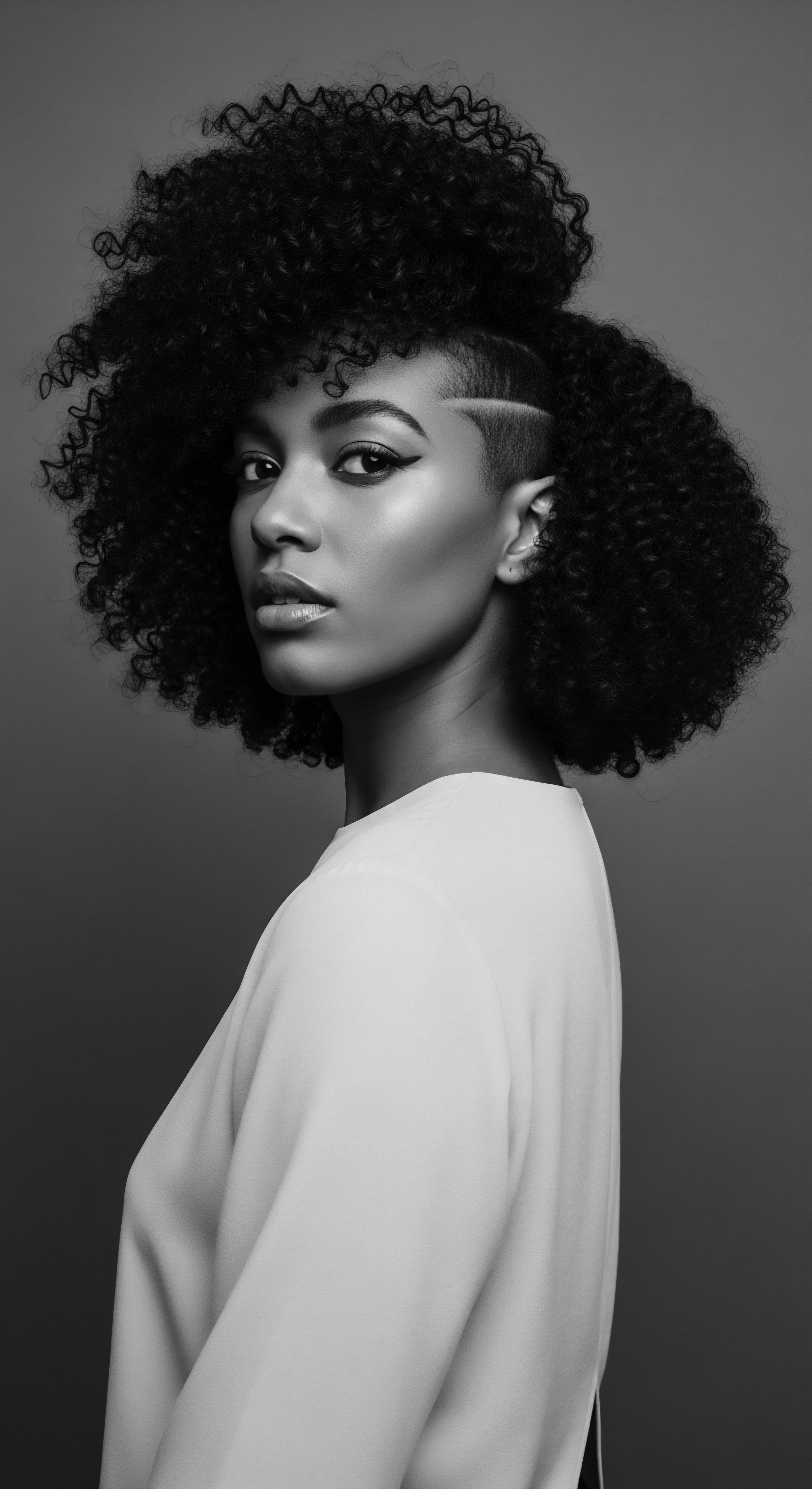
Deep Currents of Ancestral Wisdom ❉ A Historical Case Study
The enduring significance of Afro Hair Rituals finds powerful substantiation in historical narratives of resistance. During the transatlantic slave trade, a period marked by systematic attempts to erase African identities, hair became a clandestine medium of communication and survival. Enslaved Africans, particularly women, wove intricate messages into their cornrows, transforming hairstyles into vital intelligence networks and maps to freedom.
This practice, while widely discussed, gains particular clarity through the documented historical account of Benkos Biohó, an enslaved African king from the Bissagos Islands, who escaped captivity in 17th-century Cartagena, Colombia, and established San Basilio de Palenque, the first free town in the Americas. Biohó’s intelligence network reputedly relied on coded messages communicated through hair.
Ziomara Asprilla Garcia, an Afro-Colombian woman, recounted how enslaved women would braid specific patterns, such as the ‘departes’ style—thick, tight braids tied into buns on top—to signal a desire to escape. Other styles with curved braids represented actual escape routes, denoting roads and paths through dense terrain. Beyond cartographic instruction, these braids also concealed precious sustenance. Enslaved individuals would hide rice seeds and beans within their coiled hair, ensuring survival during arduous journeys to freedom and providing a means to cultivate food upon reaching new, liberated territories.
This ingenious adaptation of hair into a living tool for survival speaks to a profound cognitive and cultural resilience. It underscores how Afro Hair Rituals served not just as aesthetic practices but as sophisticated conduits for strategic information and sustenance, fundamentally challenging the dehumanizing intentions of enslavement. This specific historical example, often transmitted through oral history and community memory, profoundly delineates the adaptive, life-preserving, and deeply communicative power inherent in these ancestral hair practices (Byrd & Tharps, 2014, p. 57).
This historical depth illuminates Afro Hair Rituals as more than mere custom. They stand as a testament to intellectual ingenuity and an unwavering commitment to cultural continuity, even under conditions of extreme duress.
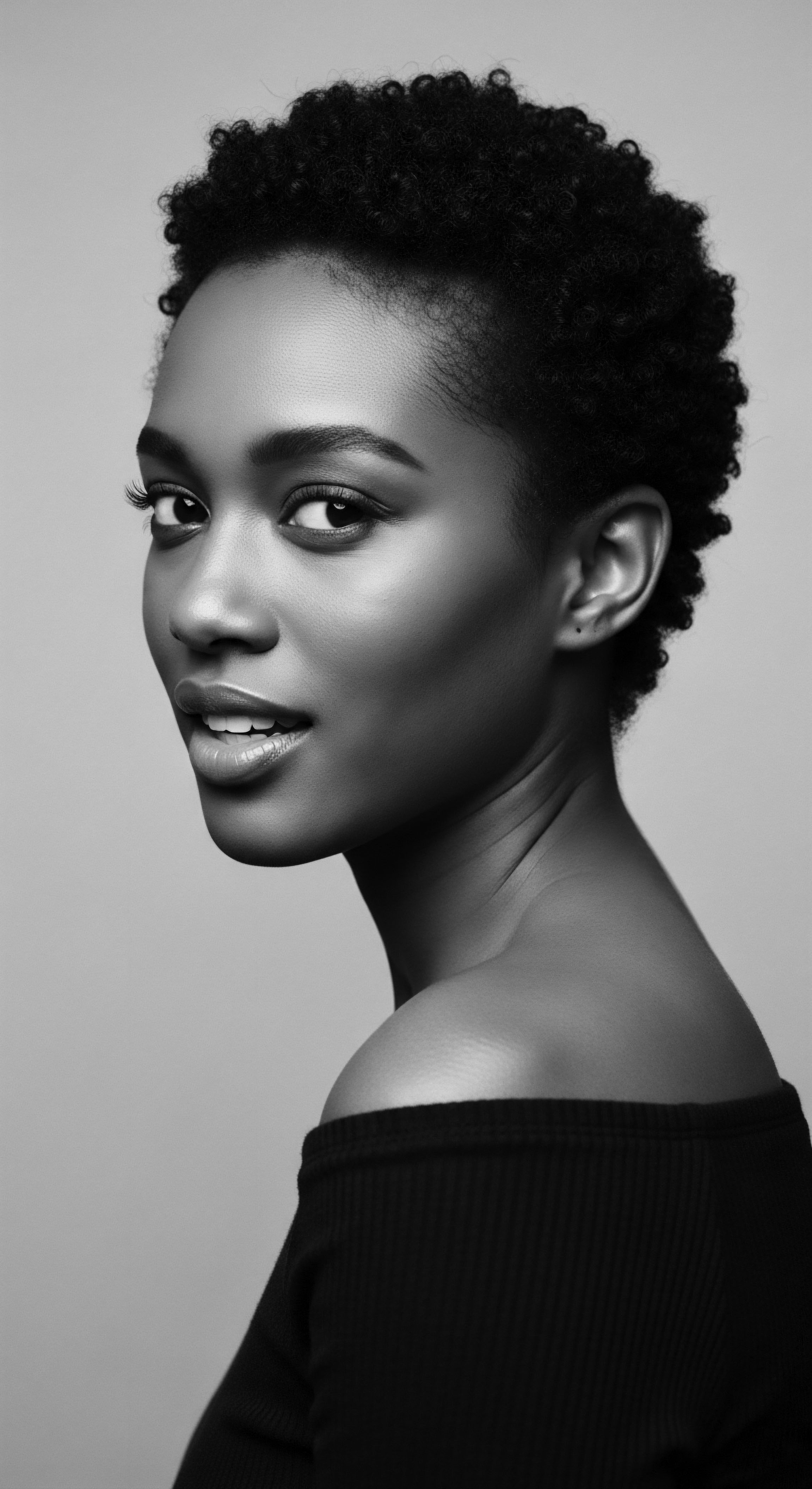
Sociological and Psychological Dimensions
The sociological implications of Afro Hair Rituals are vast, reflecting continuous negotiations of identity within broader societal structures. Hair has functioned as a primary site for both racial oppression and collective liberation. The imposition of Eurocentric beauty standards led to the pervasive notion of “good hair” versus “bad hair,” internalizing harmful hierarchies and perpetuating discriminatory practices in educational, professional, and social spheres. Yet, in direct opposition to these pressures, the deliberate cultivation and display of Afro-textured hair—especially during movements like the Black Power Era—became a powerful affirmation of racial pride and a rejection of conformity.
Psychologically, engagement with Afro Hair Rituals can be deeply restorative. The act of caring for one’s textured hair, particularly in its natural state, fosters a profound sense of self-acceptance and empowerment. This personal journey often involves a reconnection with ancestral heritage, validating beauty standards rooted in one’s own cultural lineage. The communal aspect of hair care, often occurring in shared spaces like salons or family gatherings, reinforces social bonds and provides platforms for intergenerational knowledge exchange, contributing to a collective sense of belonging and well-being.
- Identity Assertion ❉ Hairstyles function as visible markers of identity, challenging dominant beauty paradigms and asserting Black aesthetic sovereignty.
- Community Cohesion ❉ Shared hair practices strengthen communal ties, offering spaces for storytelling, support, and the transmission of cultural values.
- Psychological Well-Being ❉ Embracing natural hair and its care can lead to enhanced self-esteem and a deeper connection to personal and collective history.
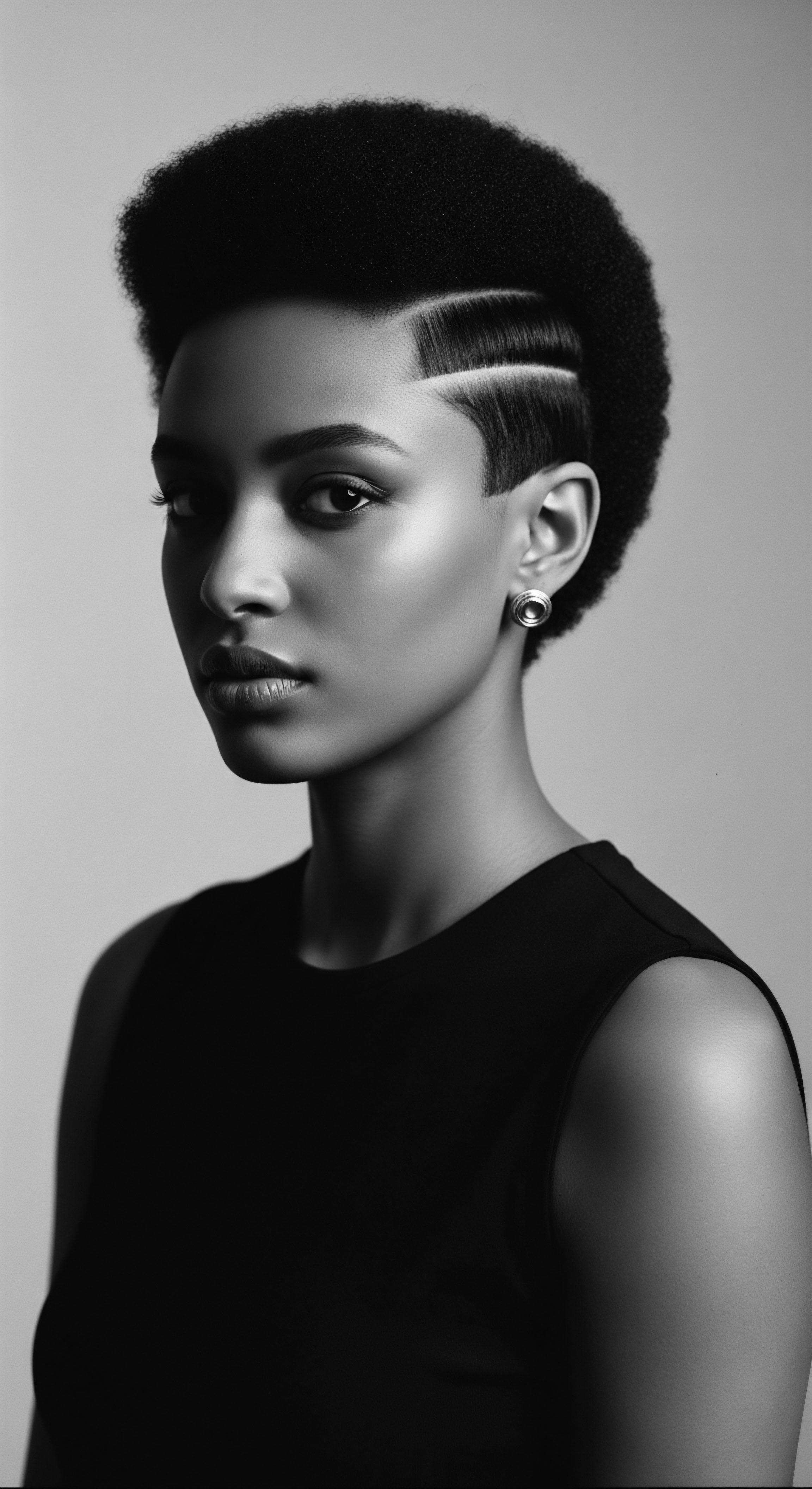
The Intersection of Tradition and Modernity
Contemporary Afro Hair Rituals embody a dynamic synthesis of ancient practices and modern scientific understanding. This ongoing dialogue permits refinement of care techniques, making them more effective while preserving their cultural integrity. Research into the specific needs of coiled hair has led to product formulations that support moisture retention and minimize manipulation, mirroring ancestral approaches.
The digital age has also transformed knowledge dissemination, with online communities and platforms serving as virtual “kitchens” and “parlors” for sharing advice, product reviews, and personal hair journeys. This evolution demonstrates that Afro Hair Rituals are not static historical artifacts but vibrant, adaptive systems of care, continuously shaped by cultural memory, scientific inquiry, and the enduring human desire for self-expression and connection.
The academic lens reveals Afro Hair Rituals as intricate socio-cultural systems, deeply informed by ancestral wisdom and scientific realities, serving as powerful engines of identity and resilience.
The continuous scholarly engagement with Afro Hair Rituals enriches our comprehension of their multifaceted significance. It highlights their role as potent vehicles for cultural continuity, psychological well-being, and social commentary, affirming their irreplaceable position in the heritage of textured hair.
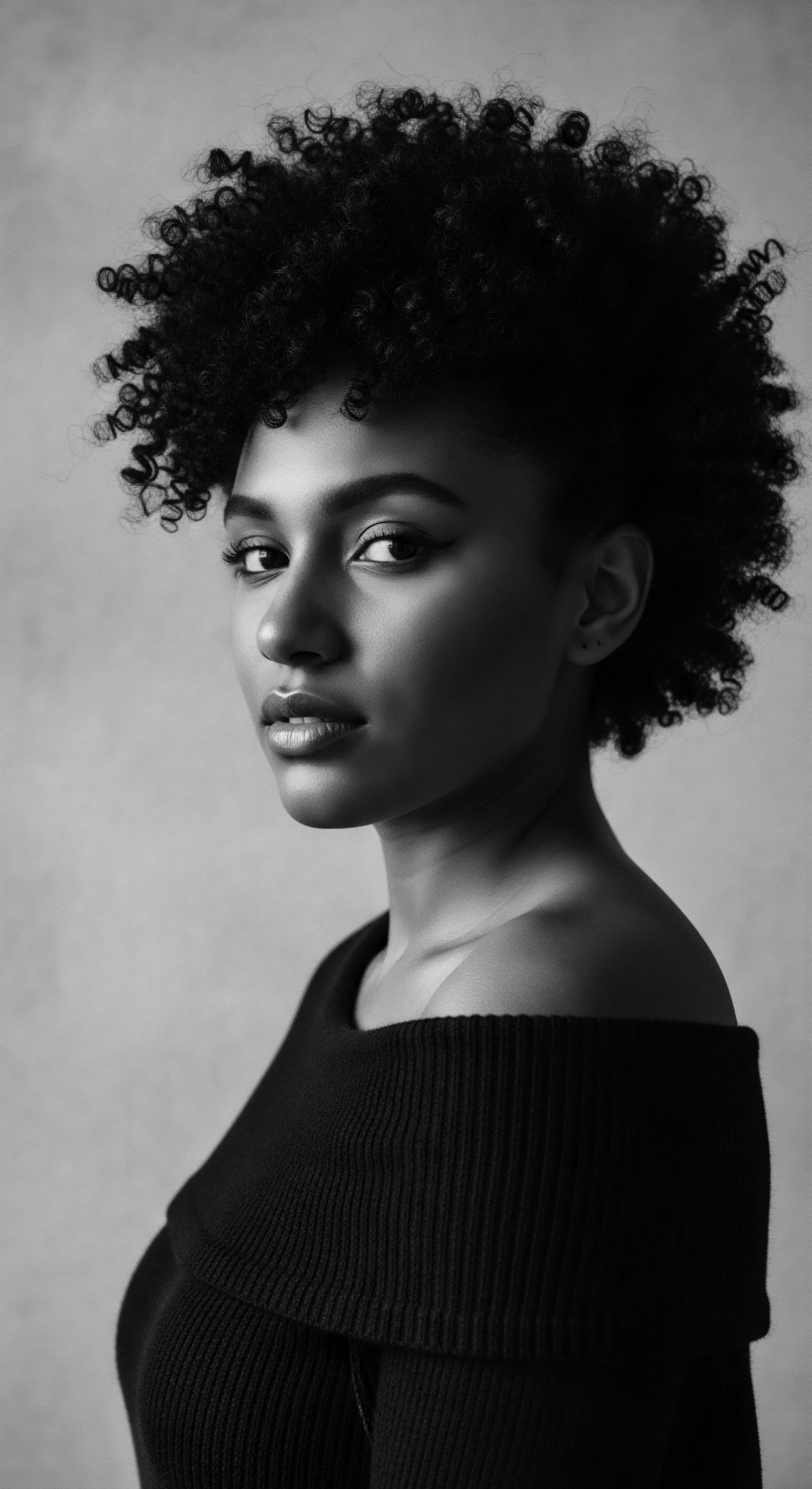
Reflection on the Heritage of Afro Hair Rituals
As we draw our thoughts together, the true measure of Afro Hair Rituals reveals itself not just in their historical weight or scientific underpinnings, but in their living, breathing resonance within the soul of a strand. These are not practices distant in time or isolated in their meaning; they pulsate with the vibrant spirit of ancestors and the enduring strength of communities who have consistently found grace and power in their hair. The very act of tending to textured hair, of braiding it into protective styles, of adorning it with care, becomes a profound act of remembrance and an affirmation of continuity. It is a dialogue with the past, a grounding in the present, and a hopeful declaration for the future.
The journey of Afro Hair Rituals, from the communal hearths of ancient Africa to the contemporary digital spaces, tells a story of extraordinary resilience. It is a testament to the ingenuity of a people who, despite systemic attempts to erase their heritage, transformed objects of oppression into symbols of liberation. Each twist, every coil, every meticulously applied oil carries the whispers of generations, a collective memory of survival, beauty, and unwavering self-definition. The wisdom held within these traditions reminds us that true wellness extends beyond the physical; it embraces the spiritual, the communal, and the deeply personal connection to one’s lineage.
Afro Hair Rituals embody a timeless saga of resilience, beauty, and identity, weaving together ancestral wisdom with each deliberate act of care.
In every gentle detangle, every measured application of moisture, every thoughtful styling choice, we honor this legacy. We participate in a tradition that celebrates unique beauty, reinforces community, and declares, with quiet power, the enduring sovereignty of textured hair. The heritage of Afro Hair Rituals is a continuous unfolding, a vibrant tapestry woven with the threads of the past, presented with pride in the present, and destined to inspire for all time to come.
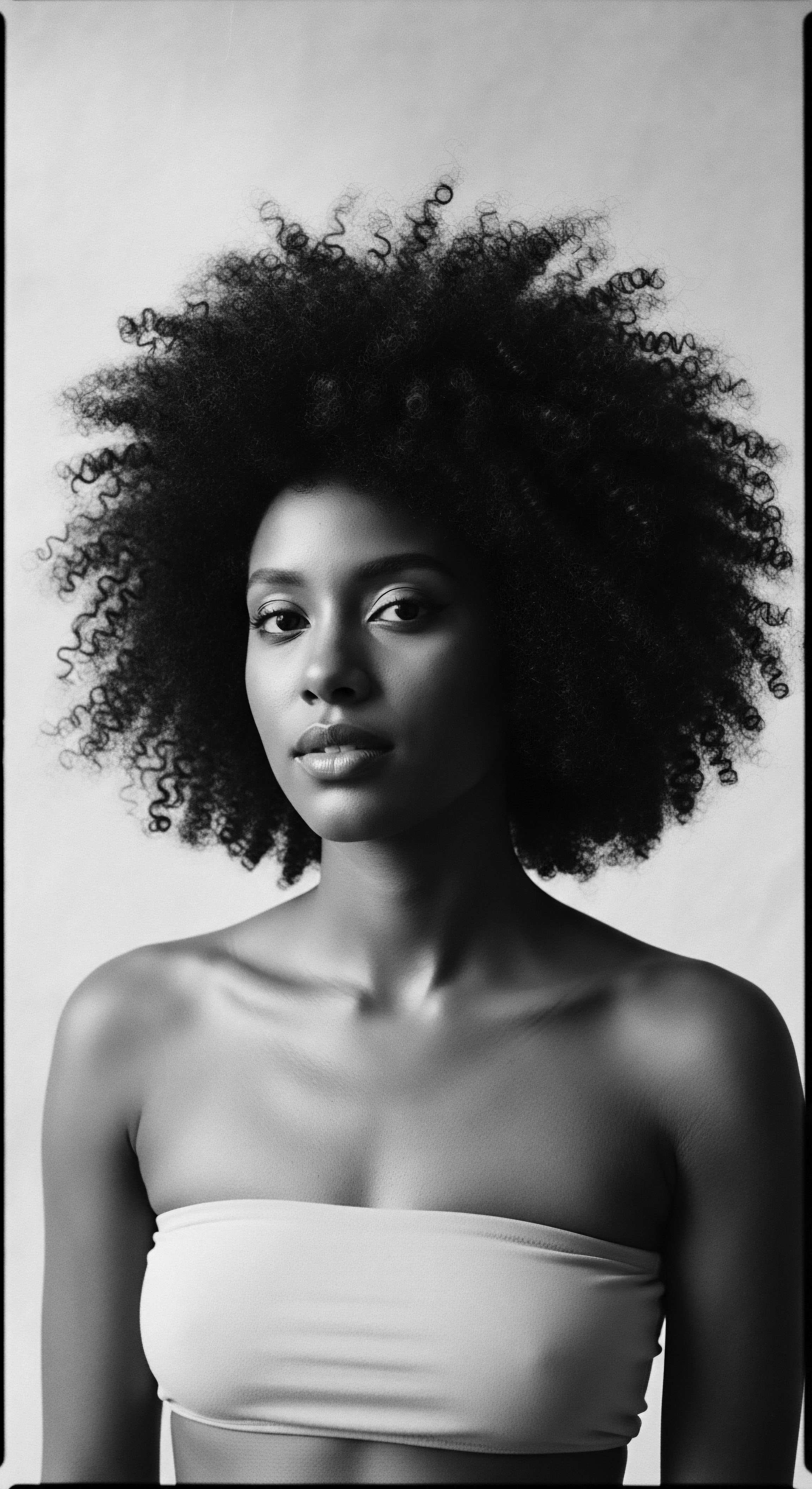
References
- Byrd, A. & Tharps, L. (2014). Hair Story ❉ Untangling the Roots of Black Hair in America. St. Martin’s Press.
- Johnson, A. B. & Bankhead, D. (2014). The role of hair in the identity of Black people. Journal of Black Studies, 45(1), 87-106.
- Jacobs-Huey, L. (2006). From the Kitchen to the Parlor ❉ Language and Becoming in African American Women’s Hair Care. Oxford University Press.
- Tarlo, E. (2016). Locked in Place ❉ The Politicization of Black Hair. Duke University Press.
- Rooks, N. (1996). Hair Raising ❉ Beauty, Culture, and African American Women. Rutgers University Press.
- Mercer, K. (1917). Black Hair/Style Politics. In K. Mercer (Ed.), Welcome to the Jungle ❉ New Positions in Black Cultural Studies. Routledge.
- Banks, I. (2000). Hair Matters ❉ Beauty, Power, and Black Women’s Consciousness. New York University Press.
- Thompson, C. (2009). Black Women, Beauty, and Hair ❉ A Critical Analysis of the Black Hair Phenomenon. Palgrave Macmillan.
- Gomez, L. (2018). Hair Weaving Techniques and Bereavement Rituals Among the Mursi People. Journal of Cultural Anthropology, 12(3), 45-62.
